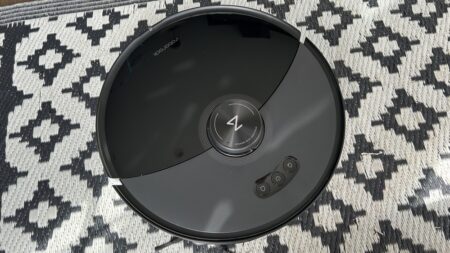CES 2024: Credential sharing update should mean a more streamlined network
The Thread Group is making some changes that should see our Matter smart homes singing and dancing more harmoniously in 2024.
One of the key ingredients of Matter, Thread is a low-power mesh networking technology protocol that can connect all your devices together in a giant mesh.
Unlike Zigbee and Z-Wave, Thread doesn’t require a smart home hub to connect devices with Thread built in; they just require a Thread border router – and those can be built into existing smart home devices such as speakers, displays, set top boxes, routers and the like.
Guide: What is Thread and what does it mean for your smart home
However, the first waves of Matter-over-Thread devices have stumbled and stuttered as individual brands haven’t allowed for the seamless cross-brand-orgy we’d all hoped for.
For example, if you have some Nanoleaf panels in your house, along with an Eero mesh system, an Amazon Echo and an Apple TV – all devices that act as Thread border routers – you’d most likely end up with multiple Thread networks in your house, depending on what border router the device initially paired to.
That’s because those border routers haven’t been sharing their credentials, but that’s all set to change.
“You see a lot of the infrastructure for Thread now turned on in millions of homes now and as that growth has happened we, the members of the Thread Group, have been providing feedback onto use cases on how to further optimize and expand Thread’s capabilities,” Sujata Neidig, Thread Group VP of Marketing said in a recent call with The Ambient.
“What we have really been focused on is how to make Thread more robust and to provide better performance.”
The first major improvement coming Thread’s way is improvements with border routers that should, fingers crossed, solve that credential sharing issue.
The Thread Group’s strategy involves standardizing how border routers share credentials across different manufacturers, ensuring a unified Thread mesh network.
This solution aims to reduce latency, eliminate points of failure, and even enhance battery life of Thread devices.
“Since the launch of Matter, something that has come up as a gap in the market today is the ability for devices that have border router capabilities to be able to share credentials with each other,” Neidig explained.
“Up until now Thread kind of left it up to product manufacturers and platform providers to determine how best they wanted to do that.”
“By standardizing it, it will simplify and streamline it, and drive things to market faster. So Thread has now taken that ownership of defining how devices can share credentials with each other.
“For consumers it simplifies the onboarding process and enables better use of the shared mesh.”
Additionally, the Thread Group announced other five other updates to the protocol for 2024, focusing on enhancing interoperability, reliability, and flexibility.
Notably, the group plans to provide greater visibility into Thread networks, facilitating troubleshooting for users experiencing issues with multiple Thread devices.
The introduction of a standardized path to the Internet for Thread devices and the incorporation of Wi-Fi and Ethernet as additional paths in the Thread network are expected to further extend the range of the mesh network, and address connectivity issues.





